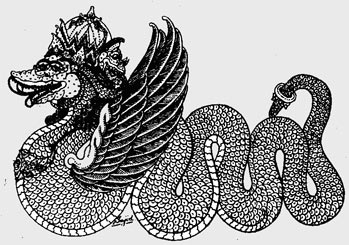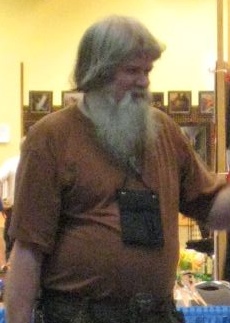|
World Serpent (other) ...
World Serpent or World Snake may refer to: * Antaboga, the world serpent of traditional Javanese mythology * Jörmungandr, also known as the Midgard Serpent, in Norse mythology * Ouroboros, a world serpent or dragon swallowing its own tail * Shesha, the serpent containing the universe in Hindu mythology * World Serpent, a deity in the ''Dungeons & Dragons'' campaign setting Forgotten Realms * World Serpent Distribution, defunct British record label and music distribution house {{disambiguation Serpent Serpent or The Serpent may refer to: * Snake, a carnivorous reptile of the suborder Serpentes Mythology and religion * Sea serpent, a monstrous ocean creature * Serpent (symbolism), the snake in religious rites and mythological contexts * Serp ... [...More Info...] [...Related Items...] OR: [Wikipedia] [Google] [Baidu] |
Antaboga
Antaboga is the world Serpent (symbolism), serpent of traditional pre-Islamic Javanese people, Javanese mythology (before the era of Demak Sultanate, Demak kingdom). It is a derivative from Shiva-Hinduism Ananta Shesha combined with Kejawèn, Javanism. After the fall of the kingdom of Majapahit and the ascent of Islam in Java, the centre for Hinduism shifted to Bali. These days many of the old myths and legends are celebrated in the wayang performance that became a vehicle to combine the syncretic philosophies from outside with those philosophies and ideas already rooted within the local cultures and traditions. At the beginning of time, only Antaboga existed. Antaboga meditated and created the world turtle Bedawang from which all other creations sprang. According to Sundanese myth, Antaboga was also responsible for the birth of Dewi Sri, the rice goddess of Java and Bali. According to "Wawacan Sulanjana", Dewi Sri emerges from the tears that turned into an egg, shed by Antaboga. ... [...More Info...] [...Related Items...] OR: [Wikipedia] [Google] [Baidu] |
Jörmungandr
In Norse mythology, Jörmungandr ( non, Jǫrmungandr, lit=the Vast gand, see Etymology), also known as the Midgard Serpent or World Serpent ( non, Miðgarðsormr), is an unfathomably large sea serpent or worm who dwells in the world sea, encircling the Earth (Midgard) and biting his own tail, an example of an ouroboros. As a result of it surrounding Midgard (the Earth) it is referred to as the World Serpent. When it releases its tail, Ragnarök (the final battle of the world) will begin. Jörmungandr is said to be the middle child of the trickster god Loki and the giantess Angrboða. According to the ''Prose Edda'', Odin took Loki's three children by Angrboða – the wolf Fenrir, the goddess Hel, and the serpent Jörmungandr – and removed them from Asgard (the world of the Æsir). The serpent Jörmungandr was tossed into the great ocean that encircles Midgard.Snorri Sturluson; Brodeur, Arthur Gilchrist (trans.) (1916). '' The Prose Edda''. New York: The American-Scandinav ... [...More Info...] [...Related Items...] OR: [Wikipedia] [Google] [Baidu] |
Ouroboros
The ouroboros or uroboros () is an ancient symbol depicting a serpent or dragon eating its own tail. The ouroboros entered Western tradition via ancient Egyptian iconography and the Greek magical tradition. It was adopted as a symbol in Gnosticism and Hermeticism and most notably in alchemy. The term derives , from ''oura'' 'tail' plus ''-boros'' '-eating'. The ''ouroboros'' is often interpreted as a symbol for eternal cyclic renewal or a cycle of life, death, and rebirth; the snake’s skin-sloughing symbolizes the transmigration of souls. The snake biting its own tail is a fertility symbol in some religions: the tail is a phallic symbol and the mouth is a yonic or womb-like symbol. Some snakes, such as rat snakes, have been known to consume themselves. One captive snake attempted to consume itself twice, dying in the second attempt. Another wild rat snake was found having swallowed about two-thirds of its body. Historical representations Ancient Egypt One of the e ... [...More Info...] [...Related Items...] OR: [Wikipedia] [Google] [Baidu] |
Shesha
Shesha (Sanskrit: शेष; ) , also known as Sheshanaga (Sanskrit: शेषनाग; ) or Adishesha (), is a serpentine demigod (Naga) and Nagaraja (King of all serpents), as well as a primordial being of creation in Hinduism. In the Puranas, Shesha is said to hold all the planets of the universe on his hoods and to constantly sing the glories of Vishnu from all his mouths. He is sometimes referred to as Ananta Shesha, "Endless-Shesha", or Adishesha, the "First Shesha". It is said that when Adishesa uncoils, time moves forward and creation takes place; when he coils back, the universe ceases to exist. The Narayana form of Vishnu is often depicted as resting on Shesha, accompanied by his consort Lakshmi. Adishesha is considered as one of the two mounts of Vishnu alongside Garuda. He is said to have descended upon Earth in the following human forms or incarnations: Lakshmana, brother of Vishnu's incarnation Rama during the Treta Yuga, and according to some traditions, as Bala ... [...More Info...] [...Related Items...] OR: [Wikipedia] [Google] [Baidu] |
Forgotten Realms
''Forgotten Realms'' is a campaign setting for the ''Dungeons & Dragons'' (''D&D'') fantasy role-playing game. Commonly referred to by players and game designers alike as "The Realms", it was created by game designer Ed Greenwood around 1967 as a setting for his childhood stories. Several years later, Greenwood brought the setting to publication for the ''D&D'' game as a series of magazine articles, and the first Realms game products were released in 1987. Role-playing game products have been produced for the setting ever since, as have various licensed products including novels, role-playing video game adaptations (including the first massively multiplayer online role-playing game to use graphics), comic books, and an upcoming film. Forgotten Realms is a fantasy world setting, described as a world of strange lands, dangerous creatures, and mighty deities, where magic and supernatural phenomena are quite real. The premise is that, long ago, planet Earth and the world of the For ... [...More Info...] [...Related Items...] OR: [Wikipedia] [Google] [Baidu] |
World Serpent Distribution
World Serpent Distribution was a British record label and music distribution house formed in the 1990s by David Gibson, Alan Trench and Alison Webster. Douglas Pearce of Death In June coined the company name in 1991, ''World Serpent'' being another name for Jörmungandr. Founding World Serpent was well known for distributing music by many post-industrial, apocalyptic folk, neofolk, avant-garde and otherwise esoteric or experimental artists, such as Death In June through NER, Current 93 through Durtro, Sol Invictus through Tursa, Coil through Threshold House, Nurse With Wound through United Dairies, Zone through Potentia, Elijah's Mantle through De Nova Da Capo, Orchis through Cryptanthus, Ozymandias through Ramses Records and many others. Many of these artists also ended up collaborating with or being influenced by one another, causing the ''World Serpent'' name to become synonymous with many of the artists and labels distributed through the company during the early 1990 ... [...More Info...] [...Related Items...] OR: [Wikipedia] [Google] [Baidu] |

_-_cropped_(cropped).png)

